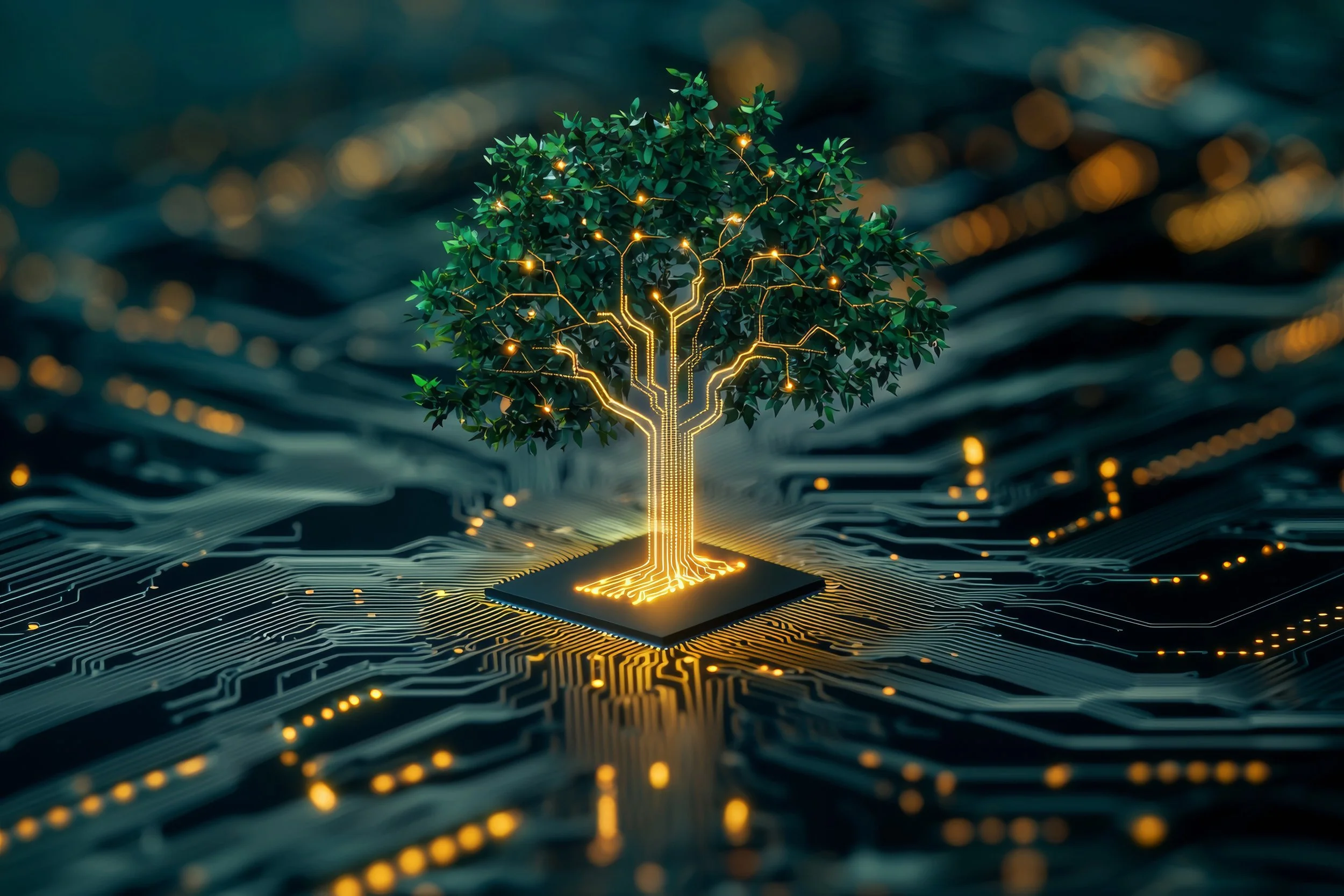The New Dispatchable Power: How AI is Changing the Definition of 'Baseload'
by Dan Roscoe, CEO of Roswall
For more than a century, grid reliability meant one thing: baseload power. Massive coal, nuclear, and gas plants ran around the clock, delivering a steady flow of electricity to meet predictable demand. This model shaped how utilities planned, invested, and operated. But that world is fading — and fast.
Today, we’re building something different. As renewable energy accelerates, electrification expands, and demand becomes more dynamic, the traditional definition of baseload no longer fits. What matters now isn’t how steadily we can generate power — it’s how flexibly we can meet demand.
Flexibility Is the New Baseload
The future of energy is about building an intelligent, adaptable grid that can respond in real time. And artificial intelligence could be the control system making that future possible.
The shift away from the old baseload model is already underway. Rigid generation assets — big, centralized, and slow to react — are being outpaced by a more agile model, one built on variable renewables, distributed energy, and smart systems that balance everything in motion.
And AI is emerging as the nervous system of this new grid.
The Double-Edged Sword of AI
It’s true that AI itself poses a challenge. The training of large language models and the rise of hyperscale data centres have a growing carbon footprint. Some estimates suggest AI’s electricity demand could soon rival that of entire countries. If this demand is met with fossil fuels, AI could exacerbate the very climate risks we aim to solve.
But if used strategically, AI is one of the most powerful tools we have for accelerating the energy transition. It can turn a grid with high shares of renewables into one that is not just clean, but reliable, resilient, and cost-effective.
Why the Old Model No Longer Works
The legacy grid was designed for a time when supply and demand followed relatively stable patterns. But renewables like wind and solar are variable by nature, and so is modern demand — from electric vehicles charging in bursts to smart appliances shifting usage in response to price signals.
Meanwhile, traditional baseload plants are slow, expensive, and often inflexible. They can’t ramp quickly when needed, and they’re ill-suited for a system defined by rapid change.
What the future grid needs isn’t inertia. It needs agility.
From Generation to Availability
What storage and flexibility technologies are now enabling is a new form of dispatchable power — not by running one big turbine 24/7, but by orchestrating a mosaic of assets in response to real-time needs.
Battery storage and pumped hydro smooth out variability in renewable output. Demand-side tools like smart thermostats, EVs, and load shifting — an emerging form of industrial demand response — give operators a whole new lever to balance supply and demand.
We no longer need generation around the clock. We need availability around the clock. And that’s a much more efficient and sustainable target.
AI’s role in a renewable-first grid proves indispensable:
Forecasting renewable generation and dynamic load patterns across thousands of nodes
Optimizing the match between supply, demand, and storage second-by-second
Autonomous dispatching of assets to respond instantly to system signals
This isn’t just a better version of the old grid. It’s a fundamentally new architecture, where intelligence is as important as infrastructure.
Virtual Power Plants: Flexibility at Scale
Virtual power plants (VPPs) bring this vision to life. By connecting distributed energy resources, from rooftop solar and home batteries to EV chargers and commercial HVAC systems, VPPs act like a single, dispatchable plant.
AI makes this possible. It stitches together disparate assets into a cohesive whole, balancing generation and demand in real time. Tesla’s VPP in California and Next Kraftwerke in Europe are just two early examples. Many still rely on gas assets to firm supply, but that’s already changing.
A Smarter, Stronger and Cheaper Grid Is Within Reach
Flexibility isn’t a compromise. It’s an upgrade. It reduces the need for costly overbuilds and fossil-based peaker plants. It allows us to maximize renewable penetration without sacrificing reliability. It builds resilience in the face of extreme weather and cyber threats.
With AI, we don’t just get cleaner energy. We get smarter energy — cheaper, faster, and better aligned to real-world needs.
In the clean energy transition, scale still matters, but agility will define success. The energy systems we’re building today must be designed not just to deliver power, but to respond to change.
That’s why AI is no longer an optional add-on. It’s becoming essential infrastructure.
The future grid won’t be a bigger version of the past. It will be something fundamentally new: smarter, faster, and ultimately, cleaner.
—
Dan Roscoe is the CEO of Roswall Development, a renewable energy developer, and President of Renewall Energy, a renewable energy provider, both based in Halifax, Nova Scotia. His work is focused on building the infrastructure for a cleaner, smarter energy future across Canada and beyond.

